Motorcycle Investor mag
Subscribe to our free email news
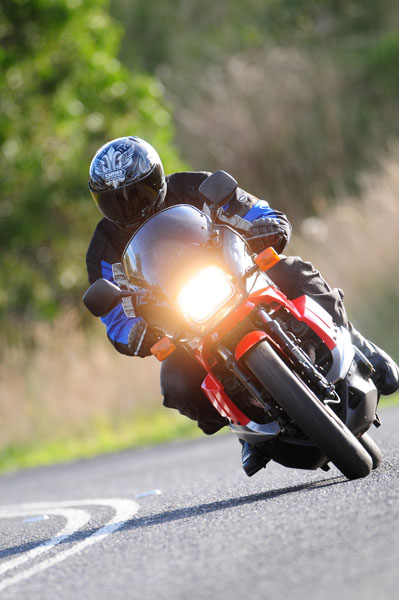
Turbo Territory – living with a Kawasaki GPz750E
(October 2020)
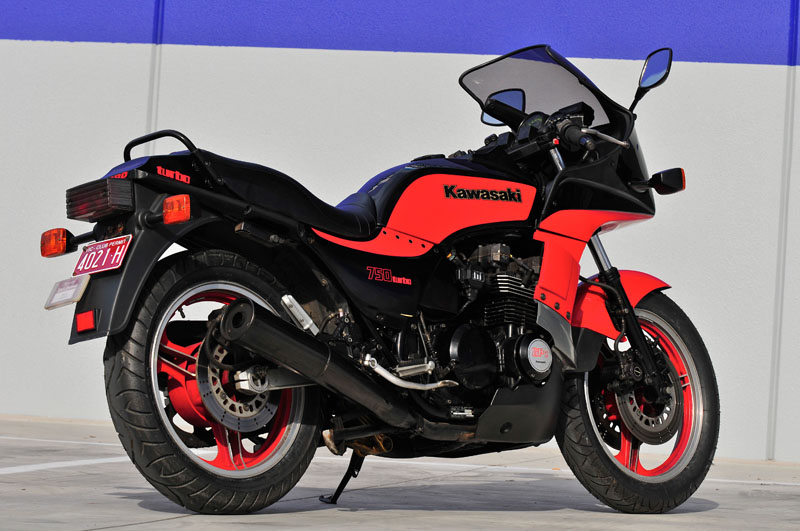
Words: Guy ‘Guido’ Allen; Pics: Stuart Grant
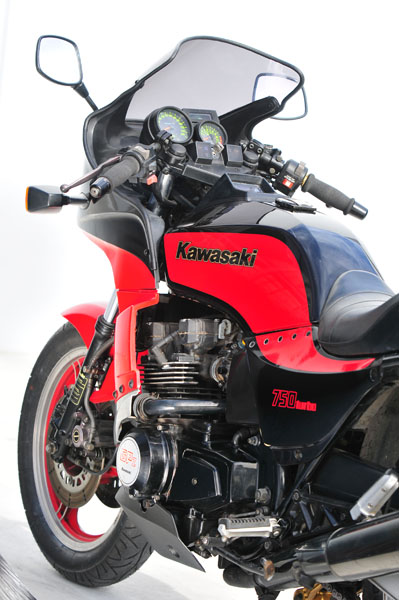
Answering the call of a factory turbo
They say timing is everything. There we were, cruising the classifieds, when something literally jumped out of the page at me. A Kawasaki GPz750 Turbo (aka Z750E) in what claimed to be great condition, with just 25,000km on the clock. Really?
A windfall some years ago had seen muggins happily frolicking down the acquisition trail but the money had just about run out. We really couldn’t afford this one…bugger. Maybe if we put off a few luxuries like food and electricity we could just about manage it.
Where many folk have a ‘bucket list’ of things they want to do before they die, I have a liability list – bikes that must at least spend a little time in the shed. A factory turbo was definitely on it.
For those of you who came in late, the Japanese factories, at a time (early to mid 1980s) when they were undertaking a particularly fierce rivalry, decided to try turbocharging. The attraction was obvious – lots more power from a modest engine size. The results were mixed and ultimately the idea failed in the market, though the entertainment factor was enormous. (See our model profile.)
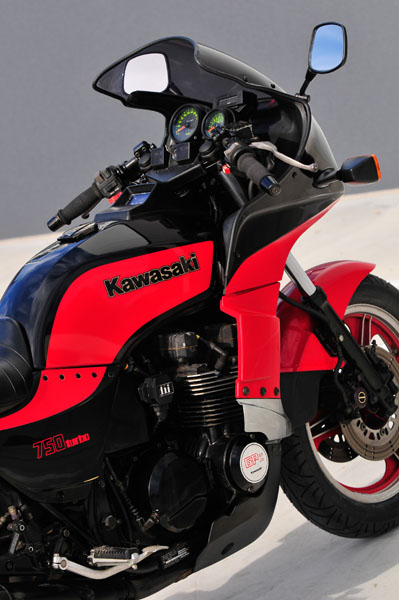
Over the years I’d ridden all the other factory huffers: Honda CX500 and 650, Yamaha XJ650 and Suzuki XN85 (also a 650). For some reason, the Kawasaki had slipped through the net. Frustratingly, it was also said to be the pick of the breed.
A little polite negotiation and the owner agreed to exchange prisoners: he got all the cash I didn’t really have while I got the bike.
Kawasaki was the last of the Japanese factories to produce a turbo, which had advantages and disadvantages. The advantage was it got to sit back a little and try to avoid the mistakes made by others. On the negative side, by the time they rolled out their toy the market was well on its way to deciding that turbos weren’t such a great idea.
So what were the issues? The biggest was the competition from the makers’ own catalogues. A full-sized conventional 1100 had a better spread of power, was almost as fast on top end acceleration and was far less complex. And none were game to release an 1100 with a turbo – probably just as well, given the questionable chassis available at the time.
By the time Kawasaki launched this machine (1984), turbos had a reputation for being soft on low-end power and often for having an unacceptable level of turbo-lag (the delay between nailing the throttle and having the engine respond). Mr K’s response was two-fold: provide a bigger 750-class engine; Mount the turbo on the headers, at the front of the powerplant, so there was minimum delay to pressurisation. By most reports it worked.
That was then – what about now? The turbo had been sitting for a few years, so a comprehensive freshen-up was called for. New fluids went in (oils and brake fluids), a new battery and fork seals. The latter had perished, possibly through lack of use. We also tossed the tyres, which were replaced with Pirelli Sport Demons.
A quick note on the rubber: the Demons seem to suit this era bike quite well. Grip is fine for general use, though I have noticed they can feel a touch ‘nervous’ on directional stability until they’re thoroughly bedded in.
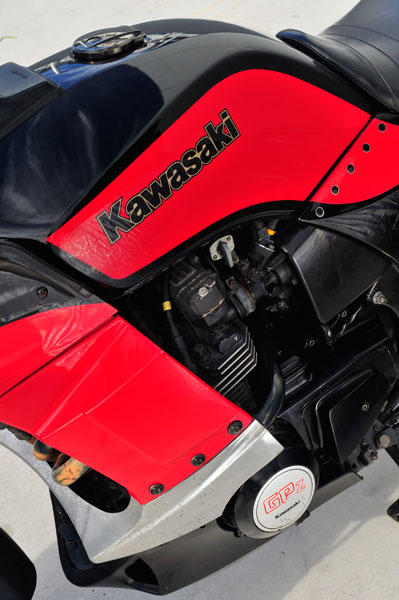
With a little trepidation, we turned the key and hit the starter for the first time. It fired up for a few seconds and promptly died. Then it stubbornly refused to play. Go back to it the next day and it starts, runs for a little while, then dies again. Fuel starvation perhaps? Nup. The pump was working fine and the injection was definitely getting petrol. Air blockage? Nup. Ignition? Ah…
Here’s a weird one: the igniter box under the seat had a crack in its casing. This is one of those times you learn to love the internet. Z750Es are rare at the best of times and parts can be hard to find. However, a surprisingly modest fee paid to a wrecker in the USA saw a replacement unit in my hand in about a week. It plugged straight in and solved the problem.
Finally, 28 years after launch, I get to ride a Kwaka turbo. Thank heavens I haven’t had to buy all my test bikes over that time…
What’s it like? Surprisingly little and low. The air-cooled engine feels and sounds pretty agricultural by today’s standards and doesn’t really do much to impress as you tiptoe your way through the traffic. It’s okay, but I’d much rather have my 1980 GSX1100 in these circumstances.
Eventually we find enough room to play. The first time it gets wound up I get so engrossed in watching the turbo boost gauge that I completely forget the tacho and speedo. So we’re screaming near redline at some hideous speed. Did that really happen? We try again, watching the correct clocks this time.
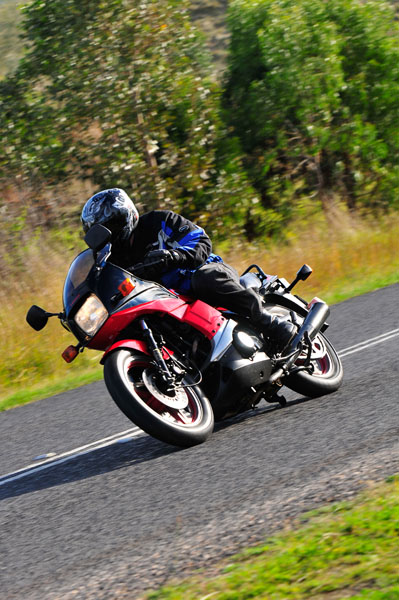
This is Dr Jekyll and Mr Hyde with wheels. One minute it’s a rather gruff mid-weight, the next it smooths out, picks up its proverbial skirts and rockets at the horizon at an impressive rate. Around 5000-6000 is where the transformation takes place and it really is dramatic. Suddenly it starts to feel a little like a modern performance bike. (Even so, these days a decent 600 would blow it into the weeds.)
A bloke I know, Harold Holt (no, not that Harold), was a Kawasaki salesman at the time these were launched. He owned a GPz1100 and reckons the turbo had more acceleration. I can believe it.
So what’s the catch? Definitely the 1980s chassis. The frame holds together well enough, but the combination of clip-on-like handlebars with very heavy steering is weird at city speeds. It comes together a whole lot better at highway pace.
The centrestand is a damn nuisance, restricting cornering clearance. My biggest beef is with the brakes. They’re just not up to the job and feel a good ten years behind the performance. You really have to think twice about where you cut loose the engine as the stoppers are easily overwhelmed.
In its day, the Zed claimed a 220km/h top speed and 11.5sec quarter mile – very respectable numbers, particularly for a ‘mere’ 750. There is more performance readily available via a remarkably simple mod. The popular theory is that Kawasaki didn’t want this bike to overshadow and outperform its soon-to-be-released GPz900R, which was a far more important model in the grand corporate scheme.
So, the stock turbo was restricted to 10.5psi boost. That, I’m told, more than doubles if you unhook the brown wire from the engine management unit in the tail. This, with one or two other subtle mods, is supposed to switch the tuning to ‘race’ mode and we’re told the difference is staggering. If only you could do the same with the brakes.
The turbo Zed is far from perfect but it does the one thing any bike worth its petrol should do, which is put a dirty great grin on your face when you ride it…
***
See our 750 Turbo model profile here
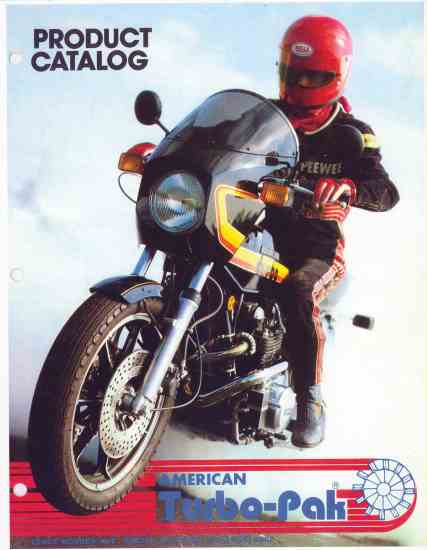
The other Kwaka turbo
Though not sanctioned by head office, there was a previous Kawasaki turbo, called the Z1000TC. This was developed in the USA from 1978, by former Kawasaki marketing director Alan Masek. It employed a Rayjay turbo unit and was sold through a small number of Kawasaki dealers. Some examples have made it to this country.
The original batch of 250 was done in the silver livery of the host bike, while a further 250 was completed in the now famous colurful graphics shown above, which were designed by Rollin 'Molly' Sanders.
Performance was said to be a 220km/h top speed with a 10.9sec quarter mile time.
Just to confuse matters, Kawasaki New Zealand is said to have imported 13 of the kits and fitted them to Z1-Rs, this creating the Z1-R1000TC.
See more on the Z1-R series, including the turbos, here.
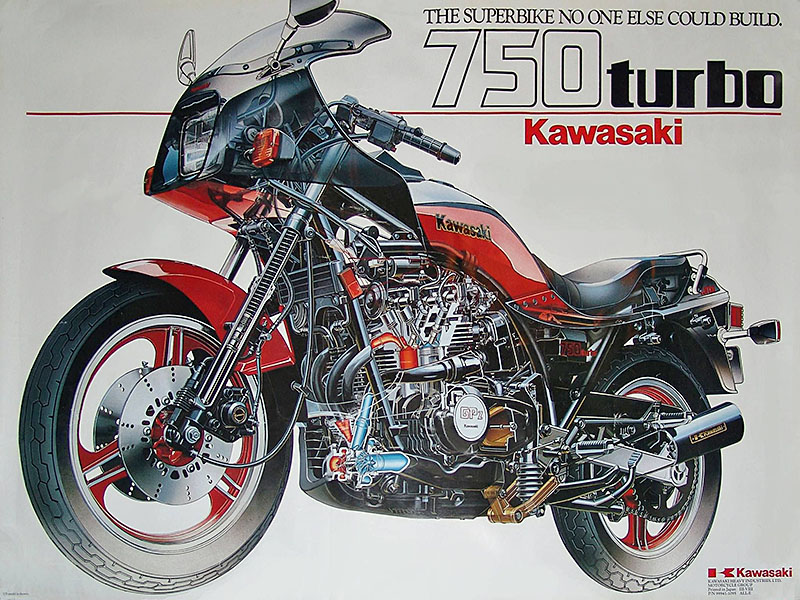
Specifications
Kawasaki Z750E turbo
ENGINE
Type: air-cooled in-line four with two valves per cylinder
Bore and Stroke: 66 x 54mm
Displacement: 738cc
Compression ratio: 7.8:1
Fuel system: digital fuel injection with turbocharger
TRANSMISSION
Type: 5-speed constant mesh
Final drive: chain
CHASSIS & RUNNING GEAR
Frame type: Twin-loop steel
Front suspension: 37mm fork, air preload, adjustable anti-dive
Rear suspension: monoshock, air preload, adjustable rebound
Front brakes: twin 1-piston 280mm twin discs
Rear brake: 1-piston, 270mm disc
DIMENSIONS & CAPACITIES
Dry weight: 233kg
Seat height: 780
Fuel capacity: 17lt
PERFORMANCE
Max power: 112hp @ 9000rpm
Max torque: 99.1Nm @6500rpm
Top Speed: 220km/h
OTHER STUFF
Price when new: $4900 plus ORC (Australia)
Good
Fast for its day
Unusual
Collectible
Not so good
Woeful brakes
Gothic handling
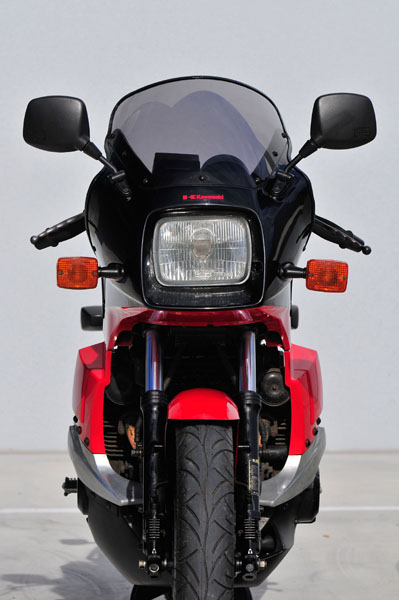
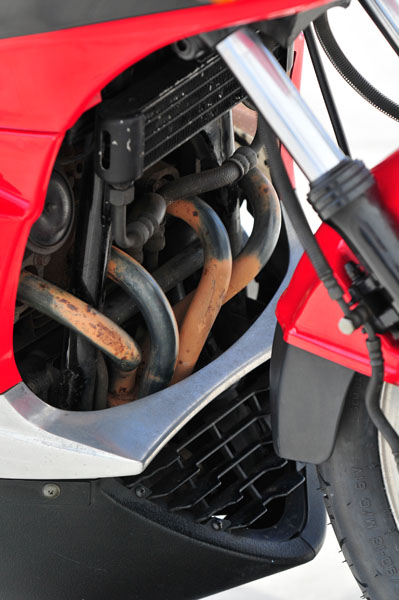
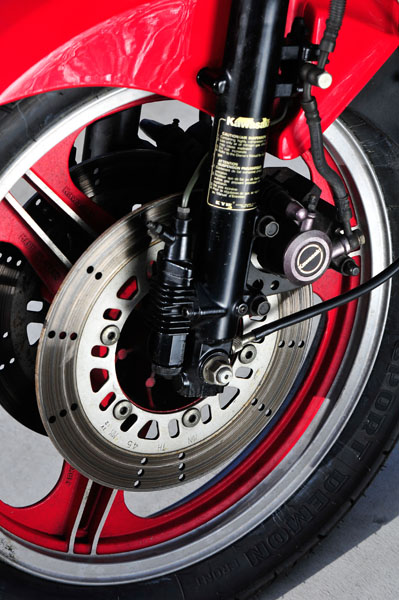
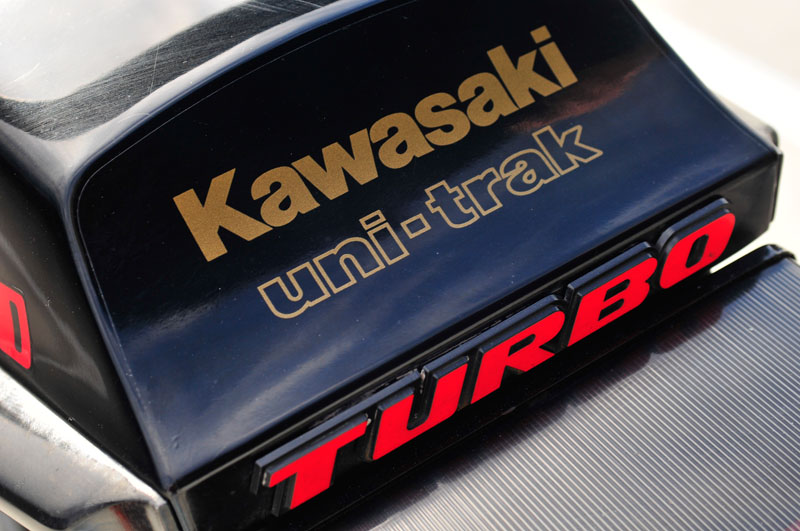
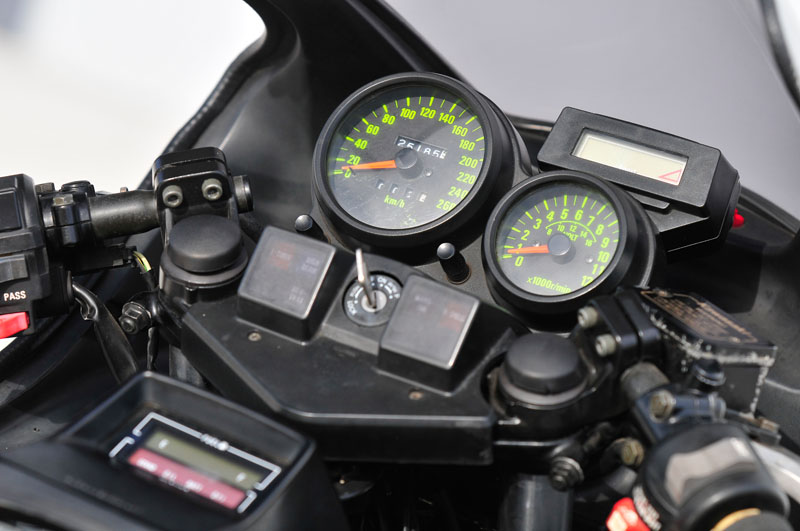
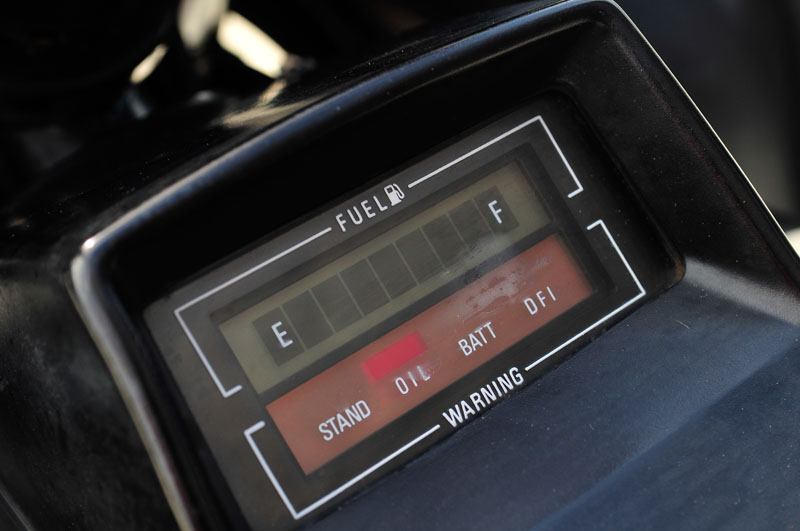
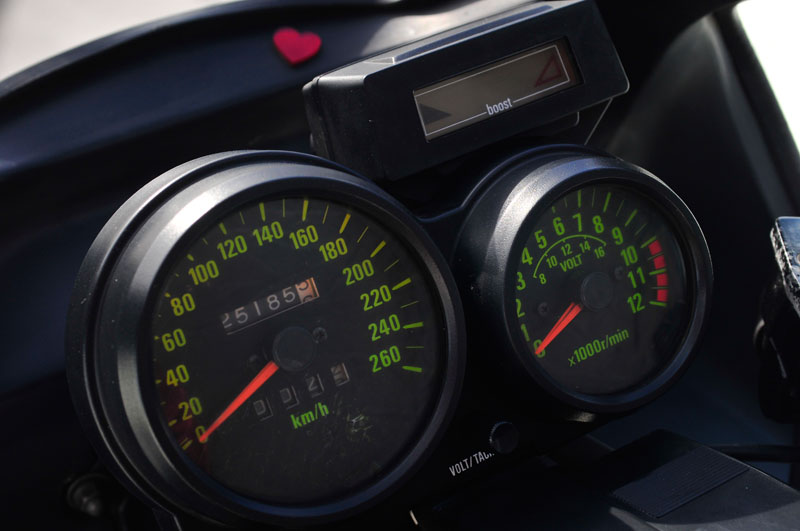
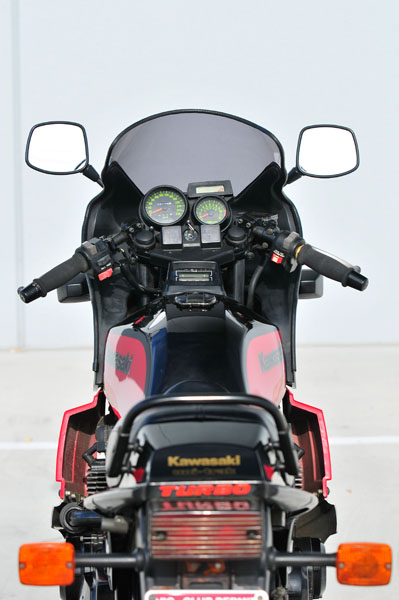
-------------------------------------------------
Produced by AllMoto abn 61 400 694 722
Privacy: we do not collect cookies or any other data.

Archives
Contact



